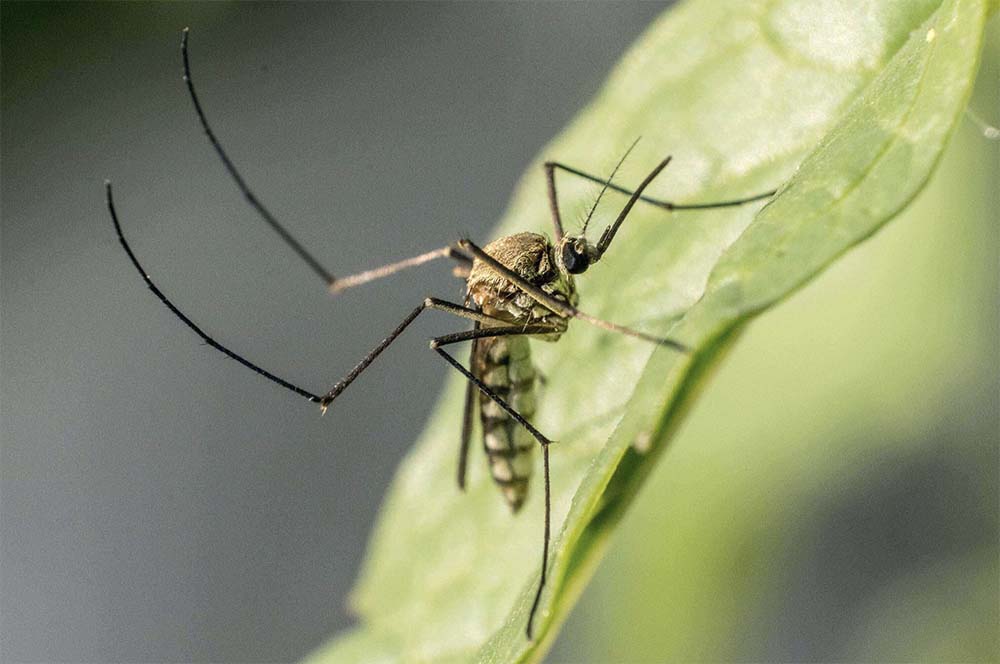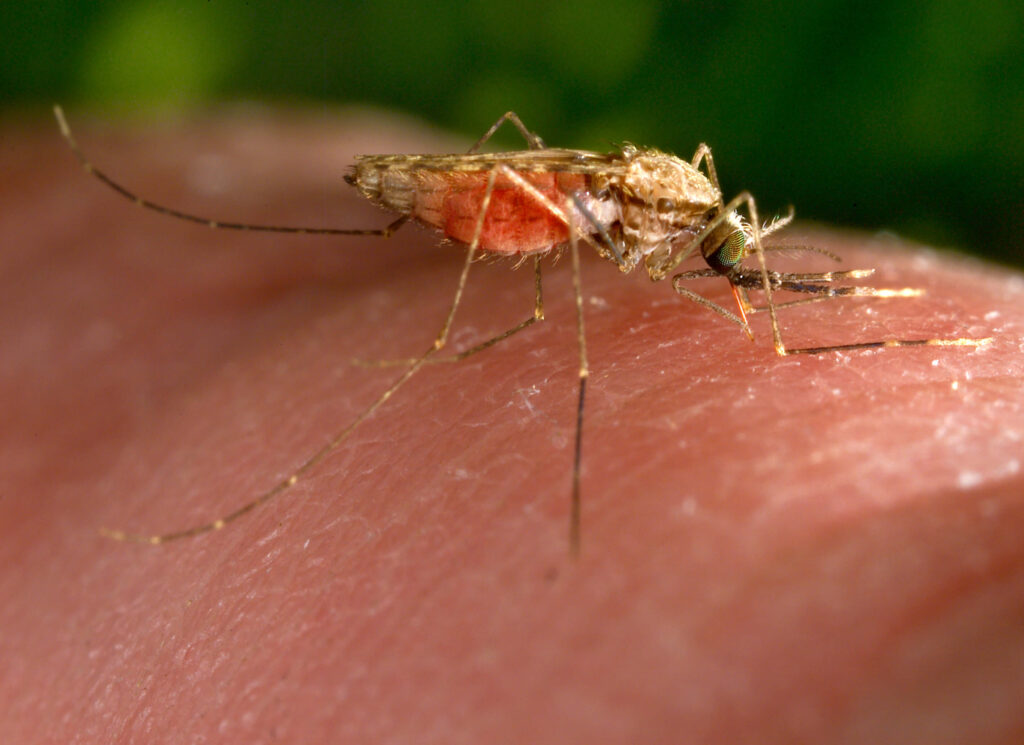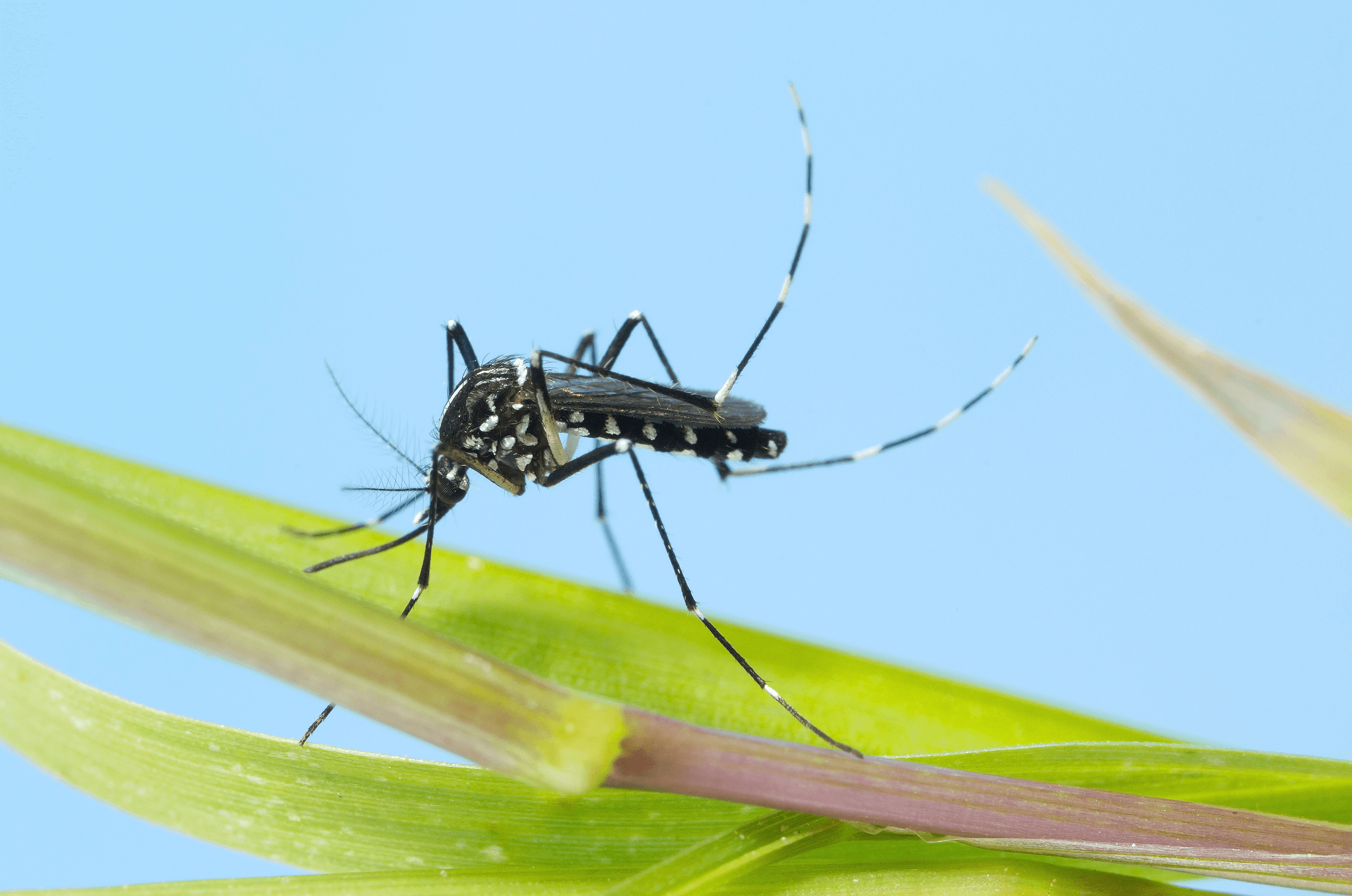As many as 3,000 different species of mosquitoes live on our globe. Mosquitoes are annoying and can keep you awake at night while you try to sleep. Apart from their annoying buzzing, mosquitoes can also transmit infectious diseases to humans and animals. Unfortunately, the female mosquitoes see us as a tasty meal of blood. They need this blood to lay eggs. In this article, we will tell you which 3 mosquito species you would like to recognise and what their characteristics are.
The common mosquito (Culex pipiens)
This mosquito is one of the most common mosquitoes in Europe, but also in countries like North America. This mosquito species usually bites at night and can be found both indoors and outdoors. They prefer the blood of birds but will also settle for humans once they are nearby. Culex mosquitoes are primarily annoying, but they can also transmit dangerous diseases such as West Nile virus and Western/Eastern equine encephalitis. Common mosquitoes like to lay their eggs in freshwater surfaces, such as puddles and flowerpots around your house. They are moderate fliers and can travel up to 3 km from their breeding site.
You can recognise the common mosquito by the following characteristics:
- A mosquito has a sucking snout that points forward. This snout is about half as long as the body of the mosquito. These are the jaws and lips of the mosquito, which have evolved into a stinging and sucking organ.
- The wings of a common mosquito are longer than the abdomen.
- The thorax of the mosquito stands slightly upright when the mosquito is at rest.
- The wings of a common mosquito are longer than the abdomen.
- The head and abdomen are parallel to the ground.
The common mosquito (Culex pipiens)
The malaria mosquito (Anopheles)
Anopheles is the best-known malaria mosquito and bites both indoors and outdoors between sunset and sunrise. They prefer humans and mammals. These mosquitoes can also transmit dangerous and sometimes even deadly infectious diseases, such as malaria. The malaria mosquito lays its eggs with floats on the surface of natural, overgrown water surfaces such as ponds and swamps. But it also likes to lay its eggs around the house in stagnant water such as flowerpots or watering cans. The malaria mosquito is found in the subtropics. They are strong fliers and can travel up to 14 km on a sugary meal and up to 4.5 km on a meal of blood.
You can recognise the malaria mosquito by the following characteristics:
- The malaria mosquito is small compared to other mosquito species.
- The head of the malaria mosquito points downwards and the abdomen stands upright (like the spoiler of a car).
The malaria mosquito (Anopheles)
The tiger mosquito (Aedes albopictus)
This mosquito is found in the (sub)tropics but has now also entered Europe and North America. This species can survive well in colder climates. Unlike the common mosquito and the malaria mosquito, the tiger mosquito likes to bite during the day. Humans are their favourite hosts. These mosquitoes can also transmit a range of infectious diseases (viruses) such as zika, chikungunya, yellow fever, dengue and West Nile virus.
Tiger mosquitoes like to lay their eggs individually or near the surfaces of temporary water sources such as used car tyres, flowerpots, and swimming pools. They are weak fliers and often travel no more than 800 metres from their original breeding sites.
You can recognise the tiger mosquito by the following characteristics::
- The tiger mosquito is small and its body is black and white.
- The extreme ends of the hind legs are white.
- The tips of the palps (mouthparts at the snout) are white.
- A white stripe runs from the head down the back.
- Both the head and the abdomen point downwards.
The tiger mosquito (Aedes albopictus)
3 facts about mosquitoes
- Both male and female mosquitoes feed on nectar and plant sap, but only the female mosquitoes bite because they need blood to feed their eggs.
- During one meal, a female mosquito can drink her entire body weight in blood.
- A female mosquito lays on average more than 100 eggs at a time and can do this up to 10 times after being fertilised by a male mosquito.
3 frequently asked questions about mosquitoes
1. How often can a mosquito bite me?
A female mosquito bites until she is ‘full’. A few days later she will lay her eggs.
2. Why does one person get bitten more often than another?
This has to do with a combination of factors. Your body temperature, body odour and the (lactic acid) bacteria on your body, among other things, are all factors.
3. Why do mosquito bites itch?
This is a natural reaction of the human body to mosquito saliva. This causes the immune system to produce histamine, which causes the nerves to become itchy as a result of increased blood flow. If too much histamine is released, the area around the bite may swell, become red and itchy.



